What I’ve worked on
My career highlights include six years at IBM honing my information design skills, six years freelancing in London, and five years at BCG (Boston Consulting Group) directing my career into product and services strategy.
I have used my product management skills to deliver platforms serving Driller operators, Investment bankers, Heads of Communications, Engineers, Contractors, Portfolio Managers, Citizens like myself, and more.
Some of the things I have helped to build: Banking and Asset Management enterprise systems, Hospitality management systems, Government digital services in three nations (downloading texts of the law, getting a passport, completing a census), Statistics and modelling Software, Business intelligence in pharma, Personal credit insights and credit reports.
Project highlights
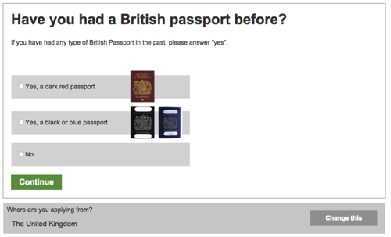
Designed for 67 million users
My analysis and question flow have been in use since 2017 when applying for a UK passport.
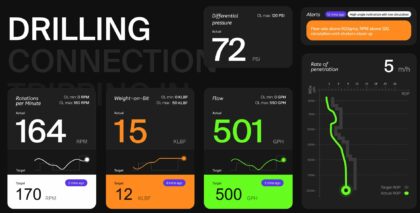
Predictive modeling for Operational efficiency
Led design strategy resulting in $10M annual savings per rig for energy client through predictive analytics tool, now sold as Software as a Service.

0 to MVP in 12 weeks
Delivered CSR reporting platform MVP in 12 weeks for €2+ Trillion AUM banking group.
Some of the artefacts and methods I have used
Discovery and Insights
- Research plan
- Surveys
- Interviews
- Contextual Enquiry
- Analytics
- Personas
- Card sorting
- Journeys
- Process flows
- Service Blueprints
Concepting, prototyping, Prioritisation
- Sketches
- Co-creation workshops
- Wireframes
- Concept posters
- Micro-story prototypes
- Mockups
- Fully-functional prototypes
- Usability Testing
- Desirability, Feasibility, Viability prioritisation
Product Vision, Roadmapping, releases
- Epics and stories in a backlog
- Personas and use cases
- Jobs to be done
- User story mapping
- Ecosystem map
- Lean specifications
- Wireflows
- KPIs and metrics
Brands I have worked with
Commercial Banking – Onboarding Operations
Designed and built a global tracker and blackbook for commercial client onboarding, allowing all account managers and the dozens of teams involved in the onboarding process, to have one place to manage all their clients, chase progress, and remove blockers.
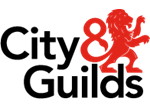
Qualification Grading tool to meet new policy
Lead the research, analysis, and design work for a Qualification Grading platform, so that City & Guilds could meet the new policy of issuing grades beyond pass / fail. My work extended into a grade modeling tool to help them set the final grade equation for each qualification.

Product Discovery Diagnostics
Reporting to Head of Product and Chief Experience Officer, researched and mapped blockers and opportunities for
IG’s flagship trading platform, and defined future roadmap.
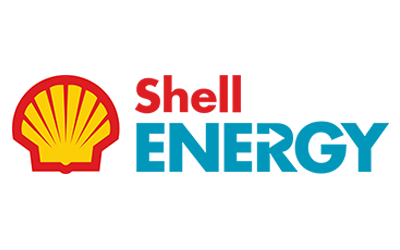
Service innovation to better serve customers
Shaped and facilitated co-creation workshops aligned with pain points and moments of truth in the service journey that I had discovered in research, to set the service vision for the future.

Launch Credit Report product and set Product vision
Worked as Head of UX during a key transition phase of launching a new credit report product, and exploring the future vision for that product through research and workshops.

Legal text purchasing service for National Printing House of Greece
Devised a service, involving pre-paid cards, email signup, account management, secure PDFs, and a purchasing mechanism for law practitioners to be able to buy copies of new published law codes digitally. (This was like sci-fi in the digital landscape of 2005)

Five years leading Product and Services Strategy
Joined Boston Consulting Group as the first Strategic Design hire in the region, trained 500+ consultants in Design Thinking, and led Product Strategy and design workstreams on dozens of projects worldwide.
Six years in-house UX in R&D and Consulting
Drove innovation in predictive analytics and business optimization tools, and led design strategy on bids, including IBM top account clients.
====================
One story about how design can help companies on their success journey.
The right information, to the right person, at the right time
The most critical phase of any project is identifying the right problem.
My favourite story here comes from a project in Oil & Gas. A predictive tool had been built that, in theory, could help increase operational performance when drilling. Now we had to figure out who had to see what, so that the insights of the tool could affect change in operations.
I was quick to discover that there are three key roles in drilling platform operations, so I spoke with people from each role (drill operator, engineers on the rig, managers in HQ), to learn a bit more about how each of them works, their environment’s constraints, decisions to make, familiar ways to visualise operational status and information, and so on.
It became immediately obvious that each person would want to focus on barely 33% of the information we had, and might be left with questions even then. We needed to make special views for each role.
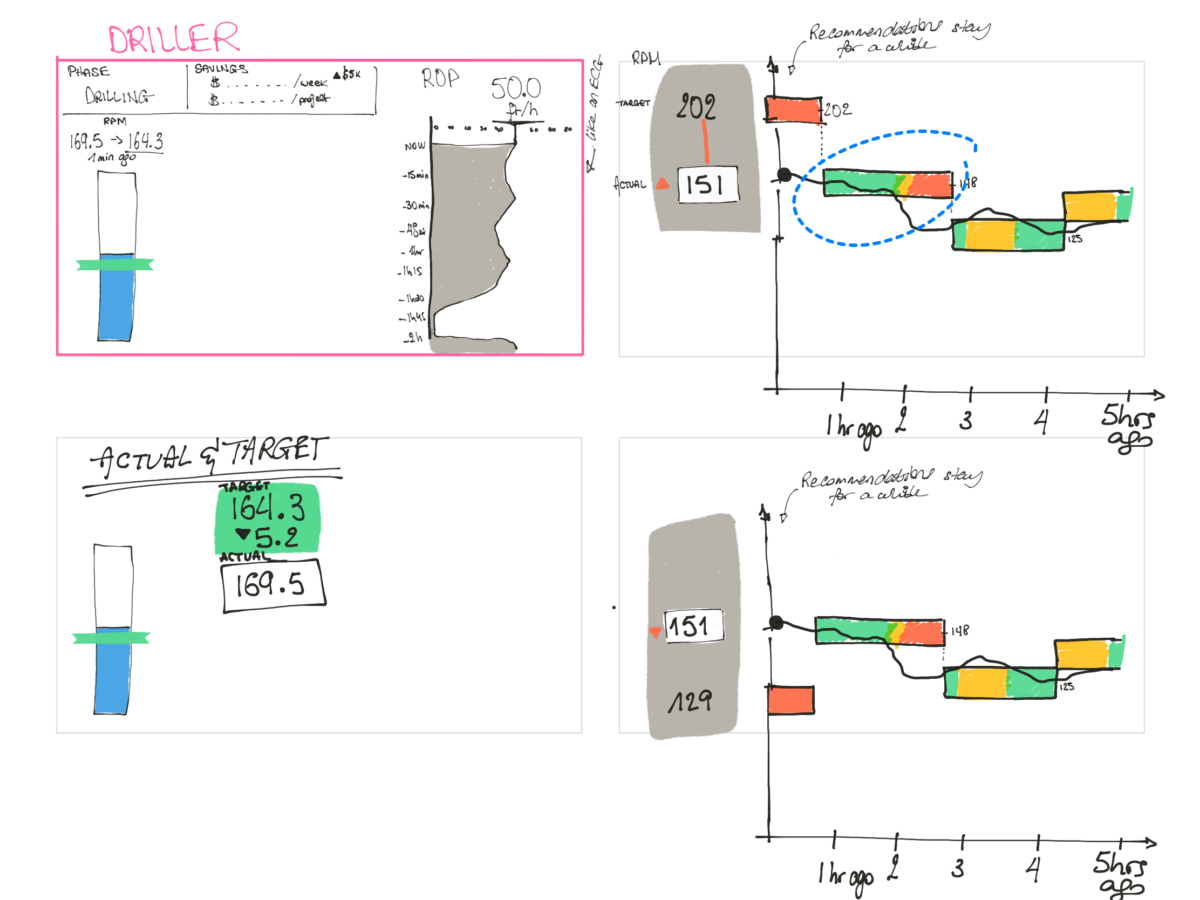
So through simple hand sketches and conversations, I iterated on a few key views for each of the three roles involved, focusing on the most operational one: the driller. I turned these into rudimentary figma mockups with all the right elements and layout, and worked with a UI designer to design them for the screen size and resolution of a 14 inch bomb-proof laptop (it is important to know where your designs will physically end up). These were quickly implemented in code by our development team.
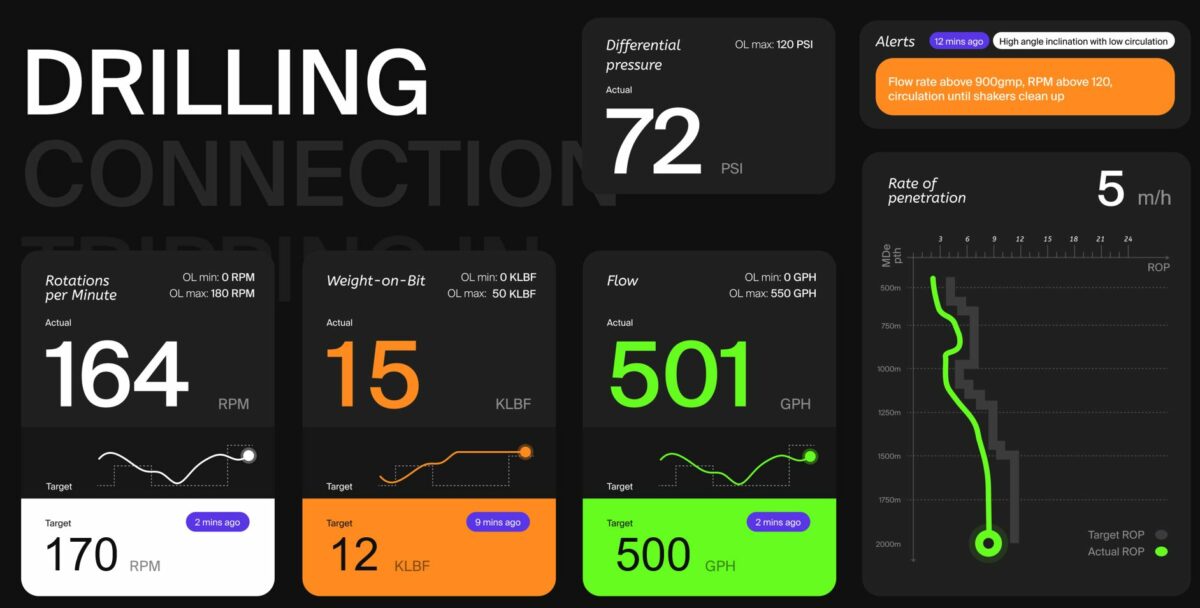
Given the context, information design was the most important construct of the solution, and the exploration in sketches, refinement in wireframes and delivery in partial mockups and live code was an approach that worked well for the team. My research into what visualisations are already used in the industry played a role in the adoption and usefulness of the tool.
With only three weeks of design involvement, including learning about the industry, user research, concepting and prototyping, we had a full solution. This was released in a successful pilot soon after, and it is estimated that it saves $10 million per year per rig.
What was key here was to know to ask questions around “who” and “why”, to push for research, and to work in a lean manner with the development team to get this implemented. I don’t remember writing up personas, even though they were the key to solving this particular business problem successfully. A stakeholder map of the ecosystem was sufficient to highlight the different needs of each role.
PDF portfolio available on request
I do have a PDF portfolio. And it might be that you ended up here because the application form on the ATS your company is using only has links for portfolios and no ability to upload a PDF.
If that is the case, drop your email here and I will send it on as quickly as I can.
